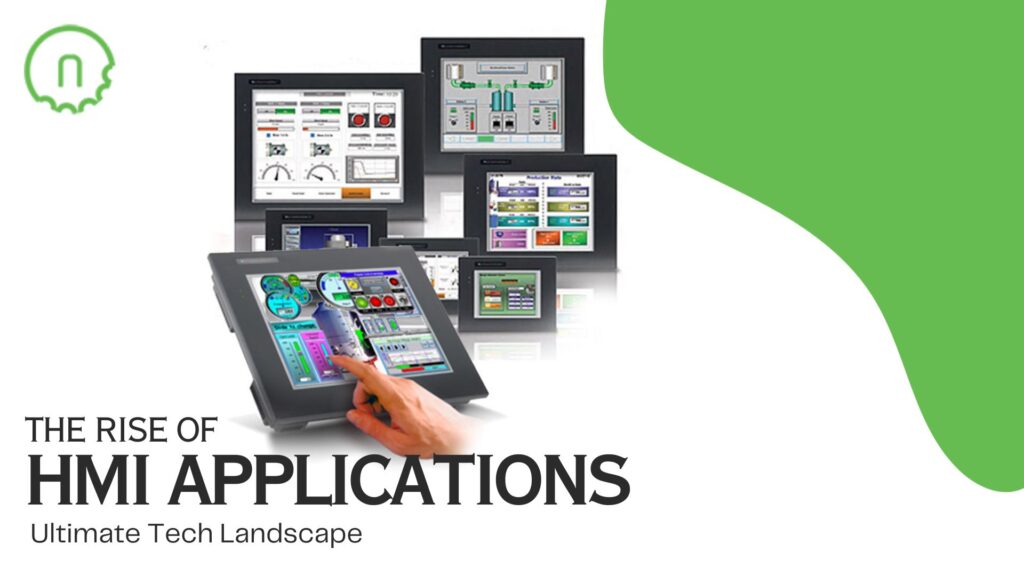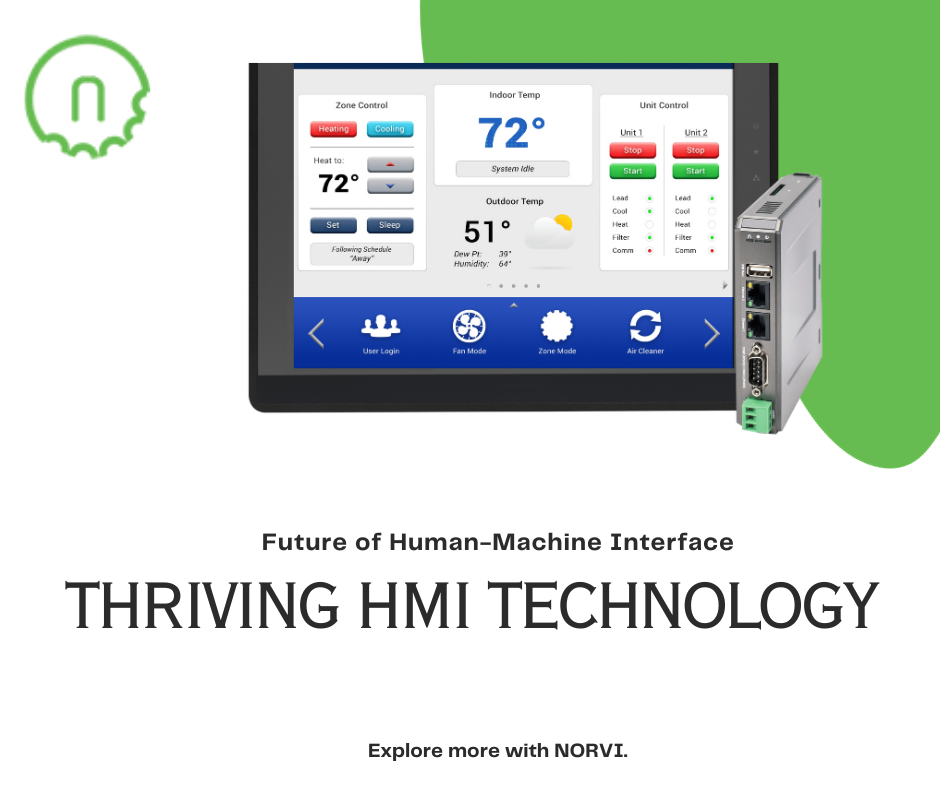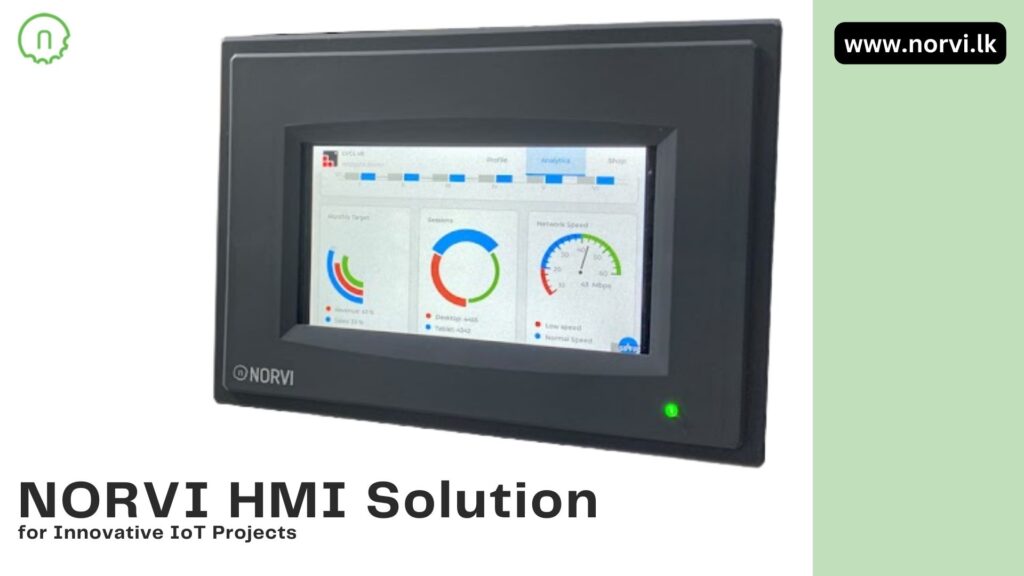
The world of technology is constantly evolving, and one of the key drivers behind this evolution is the rise of HMI applications. HMI, which stands for Human-Machine Interface, refers to the technology that enables interaction between humans and machines. In simple terms, HMI applications are the bridges that connect users to the devices and systems they are using.
Definition of HMI Applications
HMI applications encompass a wide range of technologies, including touchscreen interfaces, graphical user interfaces (GUI), voice recognition, and natural language processing. These applications are designed to enhance user experience, streamline tasks, enable real-time monitoring and control, and improve efficiency and productivity.
Importance of HMI Applications
As technology becomes more integrated into our daily lives, the role of HMI applications becomes increasingly significant. From smartphones and tablets to industrial control systems and medical devices, HMI applications play a crucial role in enabling seamless interaction between humans and machines. They have the power to transform the way we work, communicate, and navigate the digital world.
Benefits of HMI Applications
The Real-Life Impact of HMI Applications is presented in this chapter.
A Game-Changing User Experience
The HMI application project aims to revolutionize the user experience in smart home automation. It has implemented intuitive touchscreen interfaces that allow users to seamlessly control and monitor their smart devices, from lighting and climate control to security systems, all from a single platform.
The impact of these HMI applications was truly game-changing. The personalized and user-friendly design made it effortless to manage a smart home, even with minimal technical knowledge. The streamlined tasks and automation capabilities not only enhanced the efficiency but also gave a sense of empowerment and control over the living space.
The tangible benefits of HMI applications in real-life scenarios are as follows. The intuitive interfaces didn’t just improve user interaction; they transformed the way people engage with technology in their daily lives, making complex tasks feel simple and accessible.
This reinforced the significance of prioritizing user-centric design in HMI applications, showcasing the profound impact they can have on enhancing the overall quality of technology-driven experiences.
Enhanced User Experience
One of the key benefits of HMI applications is their ability to enhance the user experience. By providing intuitive and user-friendly interfaces, these applications make it easier for users to interact with devices and systems. Whether it’s a smartphone, a car infotainment system, or a software application, HMI applications are designed to simplify complex tasks and make technology more accessible to users of all skill levels.
Personalization and customization are also important aspects of HMI applications. These applications can be tailored to individual preferences, allowing users to customize their interactions and create a more personalized experience. From setting up personalized profiles to adjusting interface settings, HMI applications empower users to make technology work for them.
Efficiency and Productivity
HMI applications are not only designed to enhance the user experience but also to improve efficiency and productivity. By streamlining tasks and automating processes, these applications save users time and effort. For example, in industrial automation, HMI applications enable workers to monitor and control complex systems with ease, leading to increased efficiency and reduced downtime.
In various technology sectors, such as software development and data analysis, HMI applications play a crucial role in enhancing productivity. These applications provide developers and analysts with the tools they need to work more efficiently, enabling them to focus on their core tasks and achieve better results.
Real-Time Monitoring and Control
Another major benefit of HMI applications is their ability to enable real-time monitoring and control of devices and systems. In industries such as manufacturing and healthcare, real-time monitoring is crucial for effective management and troubleshooting. HMI applications provide users with up-to-date information and control capabilities, allowing them to make informed decisions and respond quickly to changing conditions.
For example, in a healthcare setting, HMI applications enable medical professionals to monitor patient vitals in real time, ensuring timely intervention and improved patient care. In the automotive industry, HMI applications allow drivers to monitor various aspects of their vehicles, such as fuel consumption and tire pressure, in real-time, enhancing safety and performance.
| Benefits | Common HMI Application Types |
| Enhanced User Experience | Touchscreen Interfaces |
| Efficiency and Productivity | Graphical User Interfaces (GUI) |
| Real-Time Monitoring and Control | Voice Recognition and Natural Language Processing |
Common HMI Application Types
HMI applications come in various forms, each suited for different purposes and devices. Let’s explore some of the most common types of HMI applications.
Touchscreen Interfaces
Touchscreen interfaces have become ubiquitous in modern technology. From smartphones and tablets to ATMs and self-service kiosks, touchscreen interfaces have revolutionized the way we interact with devices. These interfaces offer a natural and intuitive way of interaction, allowing users to tap, swipe, and pinch to navigate through menus, input data, and control various functions.
The impact of touchscreen interfaces goes beyond personal devices. In industries like retail and hospitality, touchscreen interfaces are used to enhance customer experiences and streamline operations. For example, self-checkout kiosks in stores allow customers to scan and pay for their items without the need for a cashier.
When designing touchscreen interfaces, user experience considerations play a crucial role. Responsive and user-friendly interfaces are essential to ensure a smooth and enjoyable user experience. Elements such as icon placement, button size, and responsiveness to touch gestures are carefully designed to meet user expectations.
Graphical User Interfaces (GUI)
Graphical User Interfaces, or GUIs, have been at the heart of desktop operating systems for decades. GUIs simplify complex tasks by presenting information and options in a visually intuitive manner. Instead of relying on command-line interfaces, users can interact with the system using a combination of mouse clicks, keyboard inputs, and gestures.
Applications and websites also leverage GUIs to create user-friendly interfaces. GUIs provide users with visual cues and feedback, making it easier to navigate through menus, fill out forms, and interact with content. The use of icons, buttons, and other graphical elements helps users understand the available options and functionalities.
GUI design is a multidisciplinary field that combines principles of visual design, information architecture, and interaction design. Designers strive to create interfaces that are visually appealing, easy to navigate, and consistent with the overall brand or application design.
Voice Recognition and Natural Language Processing
Voice recognition and natural language processing technologies have significantly transformed HMI applications in recent years. These technologies enable users to interact with devices and systems using voice commands and natural language instead of traditional input methods.
Voice assistants, such as Amazon’s Alexa and Apple’s Siri, have become increasingly popular, thanks to advancements in voice recognition and natural language processing. These assistants can perform a wide range of tasks, from answering questions and setting reminders to controlling smart home devices and providing personalized recommendations.
HMI applications based on voice recognition and natural language processing are not limited to personal assistants. In industries like healthcare and customer service, voice-based interfaces are used to interact with patients and customers, providing personalized assistance and support.
Industry-Specific HMI Applications
HMI applications have found their way into various industries, revolutionizing the way we interact with technology. Let’s explore some industry-specific examples.
Automotive Sector
In the automotive sector, HMI applications have transformed the driving experience. Car infotainment systems, which include features like navigation, music playback, and communication, rely on intuitive interfaces to provide drivers with access to the various functions of their vehicles.
HMI applications in-car infotainment systems have a significant impact on user experience. Interfaces are designed to be visually appealing, easy to navigate, and accessible while driving. Voice commands and steering wheel controls are often integrated to minimize distractions and ensure driver safety.
Driver assistance technologies, such as lane departure warning systems and adaptive cruise control, also rely on HMI applications to provide real-time feedback and control options to drivers. These applications enhance safety and convenience by alerting drivers to potential dangers and assisting them in maintaining a safe and comfortable driving experience.
Industrial Automation
In industrial settings, HMI applications play a crucial role in human-robot interaction and process monitoring and control. HMI applications enable workers to interact with robots and automated systems, providing instructions, monitoring performance, and troubleshooting issues.
Human-robot interaction in industrial automation requires intuitive and user-friendly interfaces to ensure effective communication and collaboration. HMI applications provide operators with real-time feedback on the status of robots and systems, enabling them to make informed decisions and intervene when necessary.
Process monitoring and control are essential in industrial control systems, where complex operations and safety considerations must be taken into account. HMI applications allow operators to monitor parameters, such as temperature, pressure, and flow rates, in real-time. They also provide control options to adjust settings and ensure optimal performance and safety.
Healthcare and Medical Devices
HMI applications have had a significant impact on healthcare and medical devices. Medical device interfaces, such as patient monitors and infusion pumps, rely on intuitive and user-friendly interfaces to ensure accurate and timely data collection and delivery.
In healthcare settings, HMI applications enable medical professionals to monitor patient vitals, access electronic health records, and control medical devices. These applications are designed to be easy to use and provide real-time information, ensuring that healthcare providers have the necessary data to make informed decisions and deliver high-quality care.
Electronic health record systems, which store and manage patient information, also rely on HMI applications to facilitate data entry and retrieval. User-friendly interfaces are crucial to ensure healthcare professionals can access the necessary information quickly and accurately.
Emerging Trends in HMI Applications
As technology continues to evolve, new trends in HMI applications are emerging. Let’s explore some of these trends.
Virtual and Augmented Reality
Virtual and augmented reality technologies have gained significant traction in recent years, and HMI applications play a crucial role in enabling immersive user experiences. HMI applications in virtual and augmented reality environments provide users with intuitive ways of interacting with virtual objects and environments.
In gaming, HMI applications enable players to control characters and navigate virtual worlds using gestures, voice commands, and other natural interactions. Training simulations also leverage HMI applications to provide realistic and interactive experiences, allowing trainees to practice and learn in a safe and controlled environment.
Internet of Things (IoT) Integration
The Internet of Things (IoT) is a network of interconnected devices that communicate and share data. HMI applications are essential in integrating IoT devices and enabling control and monitoring capabilities.
HMI applications in IoT environments facilitate seamless device control and monitoring. Users can interact with smart devices, such as thermostats, lights, and appliances, using intuitive interfaces. These applications provide real-time feedback on device status and allow users to adjust settings and preferences.
Smart home automation is one of the key areas where HMI applications are making a significant impact. Users can control various aspects of their homes, from temperature and lighting to security systems, using intuitive smartphone interfaces or voice-controlled devices.
Gesture Recognition and Biometrics
Advancements in gesture recognition and biometric technologies have opened up new possibilities for HMI applications. These technologies enable users to interact with devices and systems using gestures, facial expressions, and other physiological characteristics.
Gesture recognition allows users to control devices and systems by simply moving their hands or body. For example, in a smart home environment, users can turn on lights or adjust the thermostat by waving their hands or making specific gestures.
Biometrics, such as fingerprint and facial recognition, are used for user authentication and security purposes. HMI applications based on biometrics enable secure and convenient access to devices, systems, and applications.
Challenges and Future Outlook
While HMI applications offer numerous benefits and opportunities, they also come with challenges. Let’s explore some of these challenges and speculate on the future of HMI applications.
Usability and Accessibility
Designing HMI applications that cater to diverse user needs and abilities is a significant challenge. Users have different levels of technological literacy, physical abilities, and preferences. Designers must consider factors such as font size, color contrast, and interaction methods to ensure that HMI applications are usable and accessible for all users.
Accessibility is a critical aspect of inclusive technology. HMI applications must be designed to accommodate users with disabilities, ensuring that they can interact with devices and systems effectively. Providing alternative input methods, such as voice commands or screen readers, can significantly improve accessibility.
Artificial Intelligence and Machine Learning
Artificial intelligence (AI) and machine learning have the potential to further enhance HMI applications. These technologies can analyze user behavior, predict preferences, and adapt the interface to meet individual needs. For example, an AI-powered HMI application could learn a user’s preferences and automatically adjust settings and recommendations accordingly.
The future possibilities of AI and machine learning in HMI applications are vast. From personalized interfaces to adaptive systems that learn and anticipate user needs, these technologies have the potential to transform the way we interact with technology.
Future Possibilities
Looking ahead, HMI applications are likely to continue evolving and integrating with other technologies to create seamless user experiences. Emerging technologies such as brain-computer interfaces, haptic feedback, and emotion recognition have the potential to redefine HMI applications.
Brain-computer interfaces, for example, enable direct communication between the brain and external devices. HMI applications based on this technology could enable users to control devices using their thoughts, opening up new possibilities for individuals with physical disabilities.
Haptic feedback, which provides tactile sensations, can enhance user interactions by providing physical feedback. HMI applications could leverage haptic feedback to enhance the realism of virtual experiences or provide users with physical feedback when interacting with touchscreens.
Emotion recognition technologies can detect and interpret human emotions based on facial expressions or voice patterns. HMI applications could leverage this technology to provide personalized experiences based on user emotions or to adapt interfaces to provide emotional support.
Integration and interconnectivity will also play a significant role in the future of HMI applications. As devices and systems become more interconnected, HMI applications will need to seamlessly integrate with other technologies to provide a unified and intuitive experience for users.
Conclusion
HMI applications have transformed the technology landscape, enabling seamless interaction between humans and machines. From enhanced user experiences to improved efficiency and real-time monitoring, HMI applications have become an integral part of various industries.
Understanding the benefits, common types, industry-specific applications, emerging trends, and challenges of HMI applications is crucial for designers, developers, and users alike. Continuous innovation and user-centered design are key to driving the evolution of HMI applications.
NORVI will bring you a new HMI application soon, Wait with us, Here.
Wait for more exciting news from NORVI, till connect with us:
#HMI #HumanMachineInterface #Technology #IntuitiveUserInterfaces #Industries #hmisolutions #hmiapplications #hmichallenges #hmifuture #hmifutureposibilities





